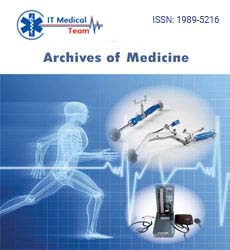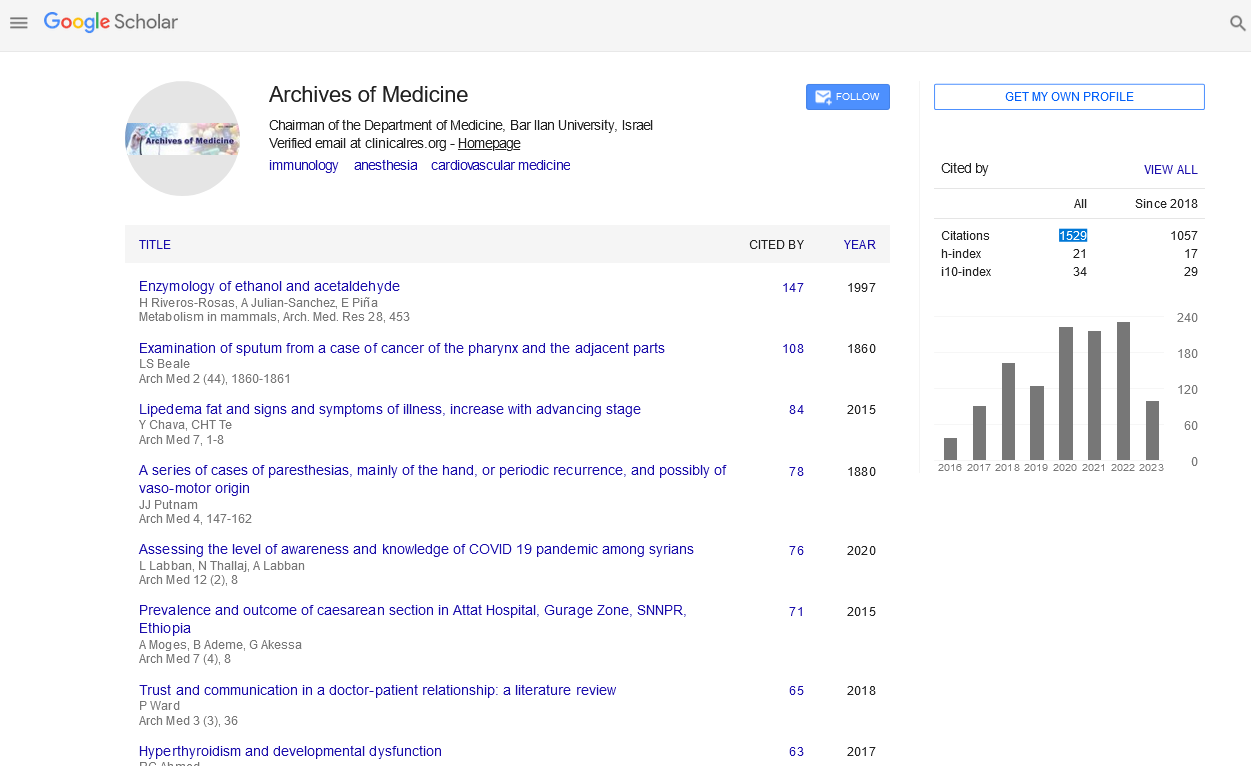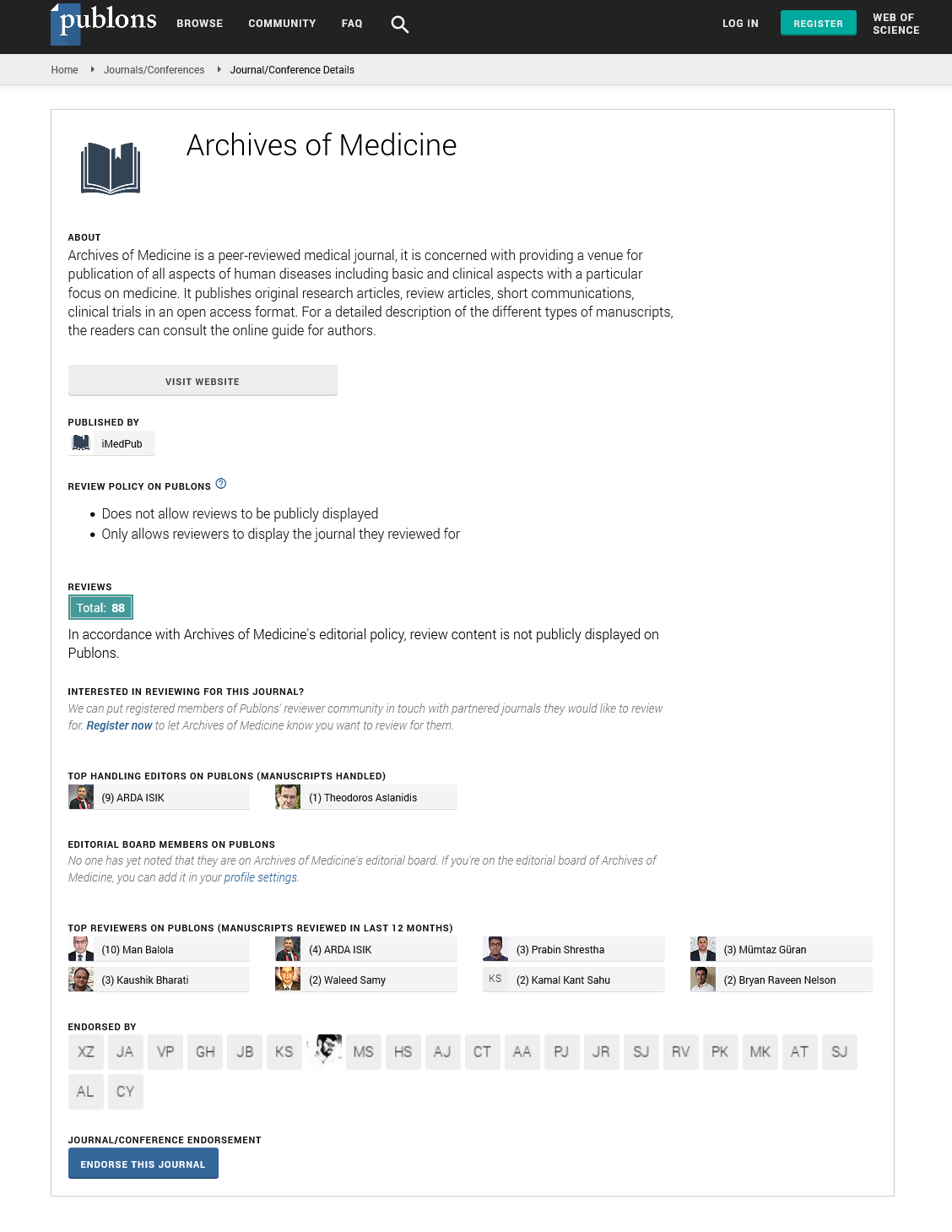Commentary - (2025) Volume 17, Issue 1
Polypharmacy in the aging population: Risks, benefits and alternatives
Aarya Nandeshkar* and
Aarya Nandeshkar*
Department of Geriatrics and Pharmacology, University of Melbourne, Melbourne, Victoria, Australia
1Department of Geriatrics and Pharmacology, University of Melbourne, Melbourne, Victoria, Australia
*Correspondence:
Aarya Nandeshkar, Department of Geriatrics and Pharmacology, University of Melbourne, Melbourne, Victoria,
Australia,
Email:
Aarya Nandeshkar, Department of Geriatrics and Pharmacology, University of Melbourne, Melbourne, Victoria,
Australia,
Email:
Received: 03-Jan-2025, Manuscript No. ipaom-24-15471;
Editor assigned: 06-Jan-2025, Pre QC No. P-15471;
Reviewed: 17-Jan-2025, QC No. Q-15471;
Revised: 22-Jan-2025, Manuscript No. R-15471;
Published:
29-Jan-2025
INTRODUCTION
Polypharmacy, the practice of prescribing multiple
medications to a patient, is an increasingly common
phenomenon among the aging population. As individuals age,
they often develop a variety of chronic health conditions that
necessitate medication management. While polypharmacy
is sometimes necessary for managing multiple diseases, it
brings significant risks, especially in older adults. The risks of
polypharmacy are compounded by the physiological changes
associated with aging, such as altered drug metabolism and
increased vulnerability to adverse drug reactions. However,
there are also benefits to polypharmacy, as it can help
control symptoms, prevent complications, and improve the
overall health of the elderly when managed appropriately.
This article delves into the risks, benefits, and alternatives to
polypharmacy in the aging population, seeking to understand
how healthcare professionals can balance treatment plans to
ensure the best outcomes for elderly patients [1].
Description
As people age, they become more susceptible to a range
of chronic health conditions like hypertension, diabetes,
arthritis, and cardiovascular diseases. These conditions often
require ongoing management, which typically involves taking
several medications. Polypharmacy becomes common when
multiple diseases require different medications, leading to
an accumulation of prescribed drugs. According to statistics,
approximately 40% of adults aged 65 and older take five or
more medications regularly, qualifying them for polypharmacy.
The goal of polypharmacy is to address the complexities of
aging, where patients may experience multiple co-existing
conditions that require pharmacological intervention.
However, polypharmacy is not without significant challenges.
The primary concern regarding polypharmacy is the risk of
drug interactions. As people age, their organs, particularly the
liver and kidneys, experience reduced efficiency in processing
medications. This alteration in drug metabolism can lead to
the accumulation of medications in the body, increasing
the likelihood of toxicity or adverse effects. For instance,
medications that are commonly prescribed to elderly patients
for high blood pressure, diabetes, or heart disease may interact
in ways that exacerbate one condition or lead to new health
issues. Drug interactions can also cause one drug to nullify
the effectiveness of another, which can complicate treatment
plans and reduce the desired therapeutic outcomes [2].
Another risk associated with polypharmacy is the
heightened potential for side effects. The aging body
experiences changes in composition, such as reduced muscle
mass and increased body fat, which can affect the absorption,
distribution, and elimination of drugs. Older individuals are
also more likely to experience comorbidities, which increases
the likelihood of taking medications that target various organ
systems. This polypharmacy may increase the chance of experiencing adverse side effects, particularly when multiple
medications interact. For example, the use of sedatives or
benzodiazepines can increase the risk of drowsiness, dizziness,
and confusion, which can contribute to falls and accidents
among elderly individuals. Cognitive decline and physical
frailty are other contributing factors that increase the risk
of complications arising from polypharmacy. Older patients
may have difficulty remembering to take their medications
on time or may forget to refill prescriptions, leading to gaps
in treatment. Non-adherence to medication regimens is
a significant concern in the elderly population, as it can
undermine the effectiveness of treatment and worsen health
conditions. Additionally, the financial burden of multiple
medications can result in some patients forgoing treatment
or not purchasing necessary drugs, further complicating their
healthcare management [3].
Despite these risks, polypharmacy can be beneficial when
used appropriately. Many older adults experience multiple
health conditions that cannot be effectively managed with a
single medication. Polypharmacy allows healthcare providers
to tailor treatment plans to address the complexities of
aging, with the goal of improving symptoms and enhancing
the quality of life. Medications can prevent complications
from chronic diseases, manage pain, regulate blood sugar
levels, control blood pressure, and reduce the risk of stroke
or heart attack. In such cases, polypharmacy becomes a vital
part of managing chronic health conditions and preventing
the exacerbation of diseases that would otherwise impair the
individual’s functionality. Additionally, the advent of modern
pharmacology has provided safer medications that are more
effective in treating the elderly population. Specialized
drugs with fewer side effects and better tolerability have
been developed, offering hope for elderly individuals who
require multiple medications. When prescribed carefully and
monitored regularly, polypharmacy can contribute to the
overall well-being of aging individuals by providing symptom
relief and improving their ability to function in daily life.
However, the key to optimizing polypharmacy lies in careful
management. Healthcare professionals must regularly assess the medications prescribed to older adults, ensuring
that the drugs are necessary, effective, and appropriate for
the patient’s current health condition. Deprescribing, or
the process of gradually reducing or stopping unnecessary
medications, has gained recognition as an essential strategy
in reducing polypharmacy-related risks. Deprescribing should
be a collaborative effort between the healthcare provider and
the patient, ensuring that both understand the implications
of reducing medication use. By reviewing each patient's
medications, healthcare providers can eliminate drugs that
are ineffective or harmful, thus decreasing the risk of adverse
effects and drug interactions [4,5].
Acknowledgment
None.
Conflict of Interest
None.
REFERENCES
- Pazan F, Wehling M. Polypharmacy in older adults: A narrative review of definitions, epidemiology and consequences. Eur Geriatr Med. 2021;12:443-452.
Google Scholar, Crossref, Indexed at
- Dovjak P. Polypharmacy in elderly people. Wien Med Wochenschr. 2022;172(5):109-113.
Google Scholar, Crossref, Indexed at






